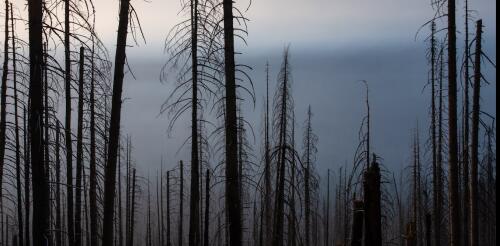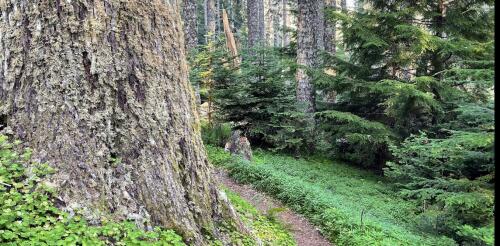Forests
In the U.S., wildland firefighters are able to stop about 98% of all wildfires before the fires have burned even 100 acres. That may seem comforting, but decades of quickly suppressing fires has had unintended consequences. Fires are a natural part of many landscapes globally. When forests aren’t allowed to burn, they become more dense, and dead branches, leaves and other biomass accumulate, leaving more fuel for the next fire. This buildup leads to more extreme fires that are even harder to put out. That’s why land managers set controlled burns and thin forests to clear out the undergrowth. However, fuel accumulation isn’t the only consequence of fire suppression. Fire suppression also disproportionately reduces certain types of fire. In a new study, my colleagues and I show how this effect, known as the suppression bias, compounds the impacts of fuel accumulation and climate change. What happened to all the low-intensity fires? Most wildfires are low-inten...
Central Appalachia is home to the third-largest concentration of forest carbon offsets traded on the California carbon market. But while these projects bring new investments to Appalachia, most people in Appalachia are not benefiting. The effect of this new economic activity is evident in the Clearfork Valley, a forested region of steep hills and meandering creeks on the Kentucky-Tennessee border. Rural communities here once relied on coal mining jobs. As the mines shut down, with the last closing in 2022, the valley was left with thousands of acres of forests and strip-mined land but fewer ways to make a good living. Today, corporate landowners and investment funds have placed most of that forest land into carbon offset projects – valuing the trees for their ability to absorb carbon dioxide emissions to help protect the climate. These carbon offset projects can be lucrative for the landowner, with proceeds that can run into the millions of dollars. Companies subject...
Forests are an essential part of Earth’s operating system. They reduce the buildup of heat-trapping carbon dioxide in the atmosphere from fossil fuel combustion, deforestation and land degradation by 30% each year. This slows global temperature increases and the resulting changes to the climate. In the U.S., forests take up 12% of the nation’s greenhouse gas emissions annually and store the carbon long term in trees and soils. Mature and old-growth forests, with larger trees than younger forests, play an outsized role in accumulating carbon and keeping it out of the atmosphere. These forests are especially resistant to wildfires and other natural disturbances as the climate warms. Most forests in the continental U.S. have been harvested multiple times. Today, just 3.9% of timberlands across the U.S., in public and private hands, are over 100 years old, and most of these areas hold relatively little carbon compared with their potential. The Biden administration is m...
Coast redwoods – enormous, spectacular trees, some reaching nearly 400 feet, the tallest plants on the planet – thrive mostly in a narrow strip of land in the Pacific Northwest of the United States. Most of them grow from southern Oregon down into northern California, snugged up against the rugged Pacific coast. They have grown by slowly responding to moisture and rich alluvial soil over millennia, combined with a genetic payload that pushes them to the upper limits of tree height. They are at risk – down to perhaps 70,000 individuals, falling from at least a half-million trees before humans arrived – but that’s not a new story, for we are all at risk. Redwoods, like all trees, are engineered marvels. People don’t tend to think of natural things as “structures,” leaving that term to stand in for buildings, bridges and dams. But although trees were not built by humans, they didn’t just happen. They have come into their own t...
Tropical forest landscapes are home to millions of Indigenous peoples and small-scale farmers. Just about every square meter of land is spoken for, even if claims are not formally recognized by governments. These local landholders hold the key to a valuable solution as the world tries to slow climate change – restoring deforested tropical landscapes for a healthier future. Tropical forests are vital to Earth’s climate and biodiversity, but a soccer field-size area of mature tropical forest is burned or cut down about every 5 seconds to clear space for crops and cattle today. While those trees may be lost, the land still has potential. Tropical forests’ combination of year-round sunshine and high rainfall can lead to high growth rates, suggesting that areas where tropical forests once grew could be valuable sites for reforestation. In fact, a host of international agreements and declarations envision just this. The Worl...




